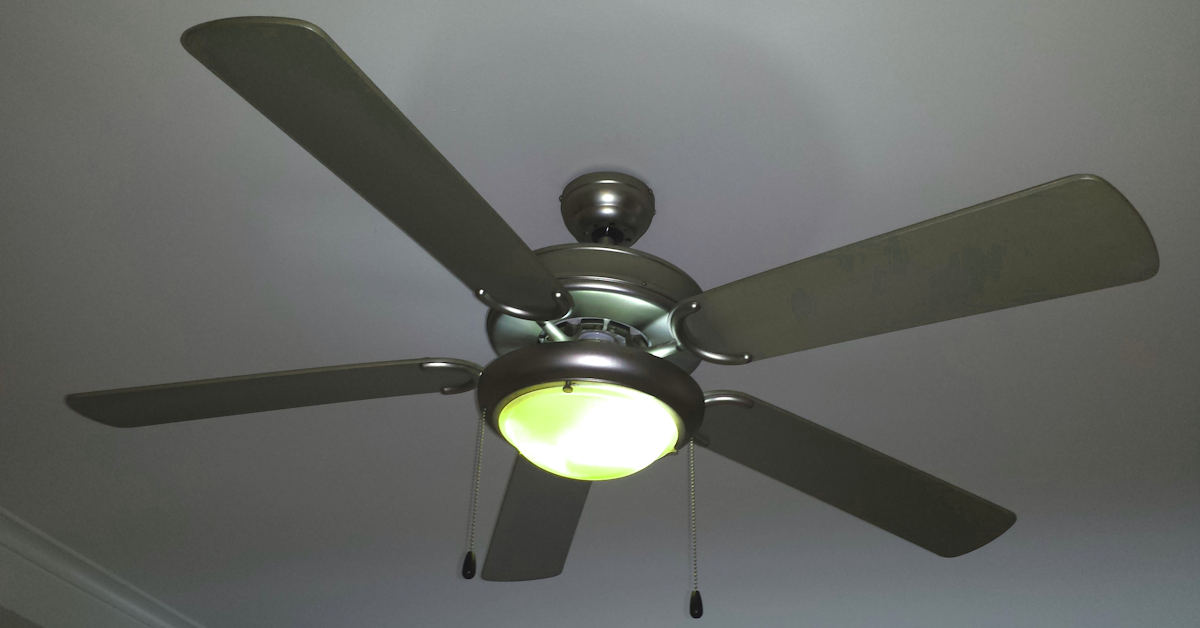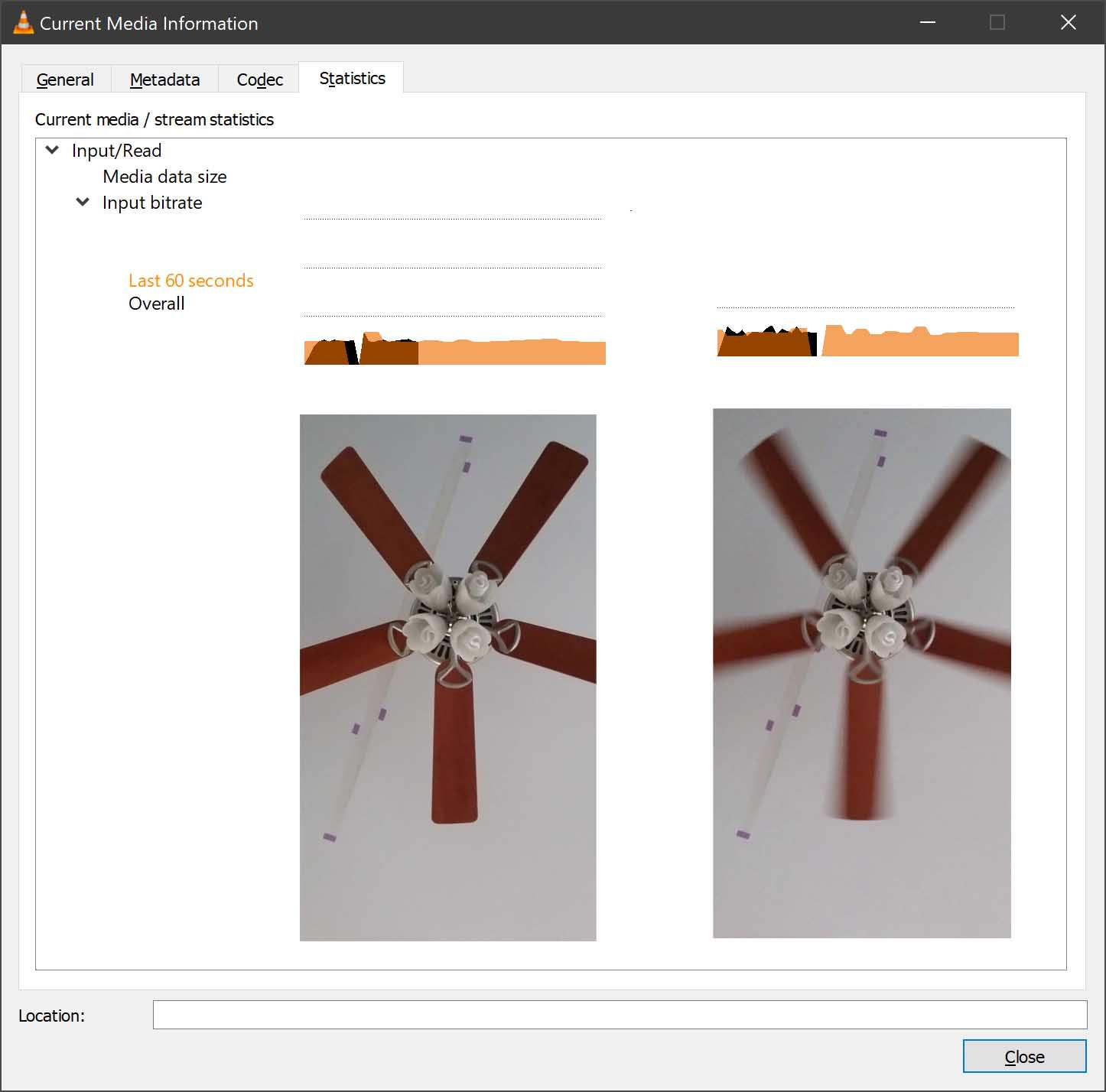Jerky online meetings? Turn off the fan!
We have all experienced jerky or freezing video and audio due to insufficient bandwidth. Did you know that having a spinning ceiling fan in the video background could be the source of the problem? Try turning it off, and you may be pleasantly surprised.

Video signals contain lots of data. Imagine trying to upload 30 two-megapixel images every second. The way applications like Zoom, WebEx, or even YouTube achieve this remarkable feat is by using powerful compression tricks. The most effective trick is only sending information that changes from one video frame to the next. A stationary background takes very little data, while movement generates a huge data spike. A continuously spinning ceiling fan is in a new position each frame, so requires lots of data. This even impacts your data usage and cost, an especially significant concern for those on WiFi hotspots. Ching-wan Yip of the Wake Forest University Instructional Technology Group measured a sustained 150 kbps increase in his data usage simply by turning on his ceiling fan.
Tips for better video quality:
- If your rotating ceiling fan is visible on screen, turn it off or reposition your camera so the fan is off screen. [Pro tip for Zoom users from Anne Hardcastle: just turn on a static image for your background to hide the fan!]
- Keep your camera steady. An unsteady handheld smartphone can present just as much a data problem as a spinning fan in the background. Camera movement changes every pixel on screen. Notice that when someone shifts their camera, the image breaks up for a second or two? Propping up your phone on a stack of books makes a big difference.
- Related to the same issue, rather than including within your presentation a recorded video (such as from YouTube or Google Drive), share a link in the chat window to let your fellow participants view the video directly from the source. If you use Zoom or WebEx to share your screen or browser while watching a YouTube video, for example, the data of the video comes down to your computer and is then sent back up to your video conference session. You are using your data twice. Unless contemporaneous commentary is essential, just let participants view the video directly from the source.
Ceiling fans keep us cool. While cool is nice, frozen is not.
P.S. Here is Yip’s bandwidth usage data. The spinning fan on the right uses 150 kbps more bandwidth than the stationary fan on the left.

Categories: Remote Teaching, Video, Video Conferencing, WebEx, Zoom
